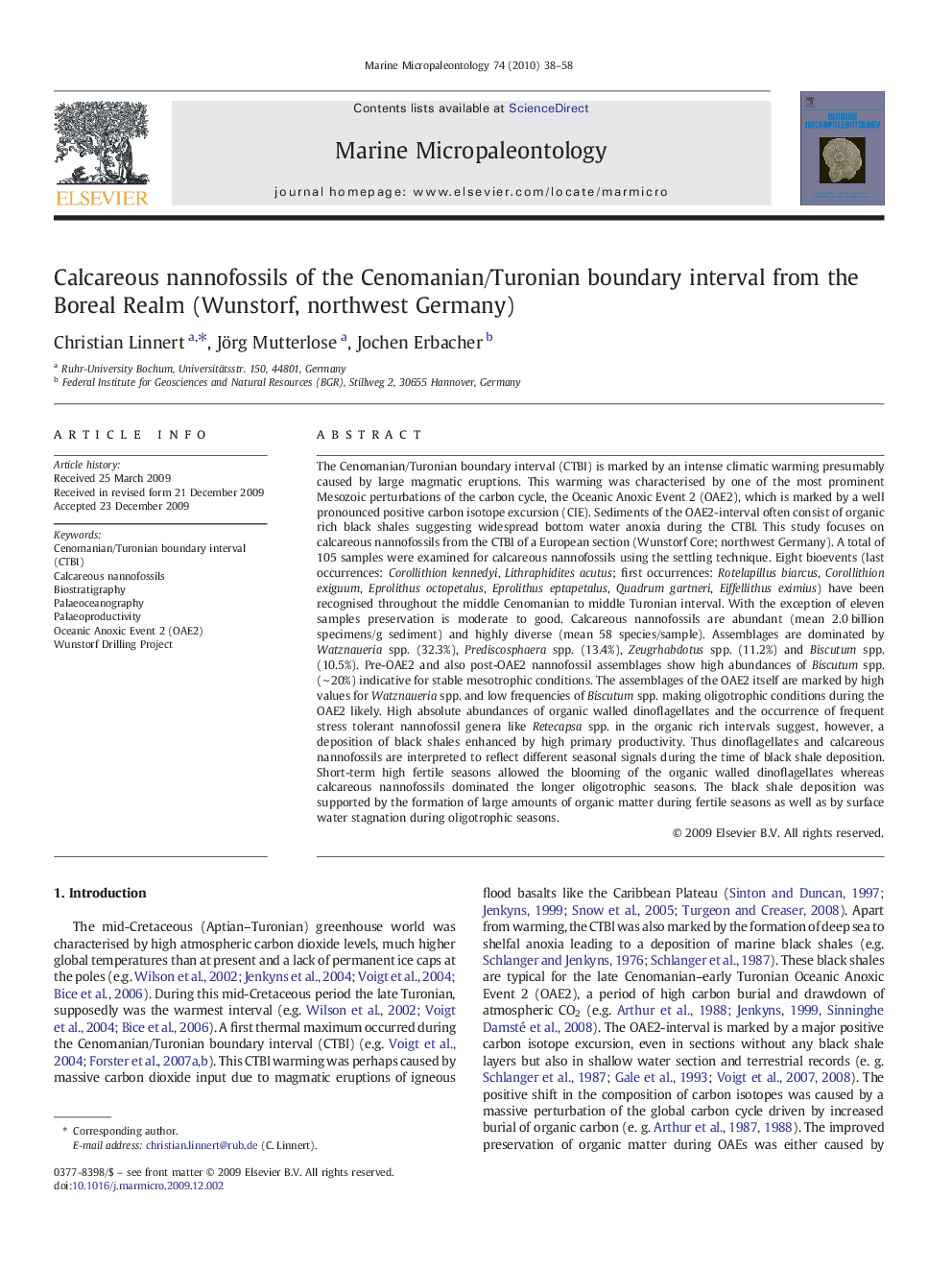| کد مقاله | کد نشریه | سال انتشار | مقاله انگلیسی | نسخه تمام متن |
|---|---|---|---|---|
| 4749168 | 1642210 | 2010 | 21 صفحه PDF | دانلود رایگان |

The Cenomanian/Turonian boundary interval (CTBI) is marked by an intense climatic warming presumably caused by large magmatic eruptions. This warming was characterised by one of the most prominent Mesozoic perturbations of the carbon cycle, the Oceanic Anoxic Event 2 (OAE2), which is marked by a well pronounced positive carbon isotope excursion (CIE). Sediments of the OAE2-interval often consist of organic rich black shales suggesting widespread bottom water anoxia during the CTBI. This study focuses on calcareous nannofossils from the CTBI of a European section (Wunstorf Core; northwest Germany). A total of 105 samples were examined for calcareous nannofossils using the settling technique. Eight bioevents (last occurrences: Corollithion kennedyi, Lithraphidites acutus; first occurrences: Rotelapillus biarcus, Corollithion exiguum, Eprolithus octopetalus, Eprolithus eptapetalus, Quadrum gartneri, Eiffellithus eximius) have been recognised throughout the middle Cenomanian to middle Turonian interval. With the exception of eleven samples preservation is moderate to good. Calcareous nannofossils are abundant (mean 2.0 billion specimens/g sediment) and highly diverse (mean 58 species/sample). Assemblages are dominated by Watznaueria spp. (32.3%), Prediscosphaera spp. (13.4%), Zeugrhabdotus spp. (11.2%) and Biscutum spp. (10.5%). Pre-OAE2 and also post-OAE2 nannofossil assemblages show high abundances of Biscutum spp. (∼ 20%) indicative for stable mesotrophic conditions. The assemblages of the OAE2 itself are marked by high values for Watznaueria spp. and low frequencies of Biscutum spp. making oligotrophic conditions during the OAE2 likely. High absolute abundances of organic walled dinoflagellates and the occurrence of frequent stress tolerant nannofossil genera like Retecapsa spp. in the organic rich intervals suggest, however, a deposition of black shales enhanced by high primary productivity. Thus dinoflagellates and calcareous nannofossils are interpreted to reflect different seasonal signals during the time of black shale deposition. Short-term high fertile seasons allowed the blooming of the organic walled dinoflagellates whereas calcareous nannofossils dominated the longer oligotrophic seasons. The black shale deposition was supported by the formation of large amounts of organic matter during fertile seasons as well as by surface water stagnation during oligotrophic seasons.
Journal: Marine Micropaleontology - Volume 74, Issues 1–2, February 2010, Pages 38–58